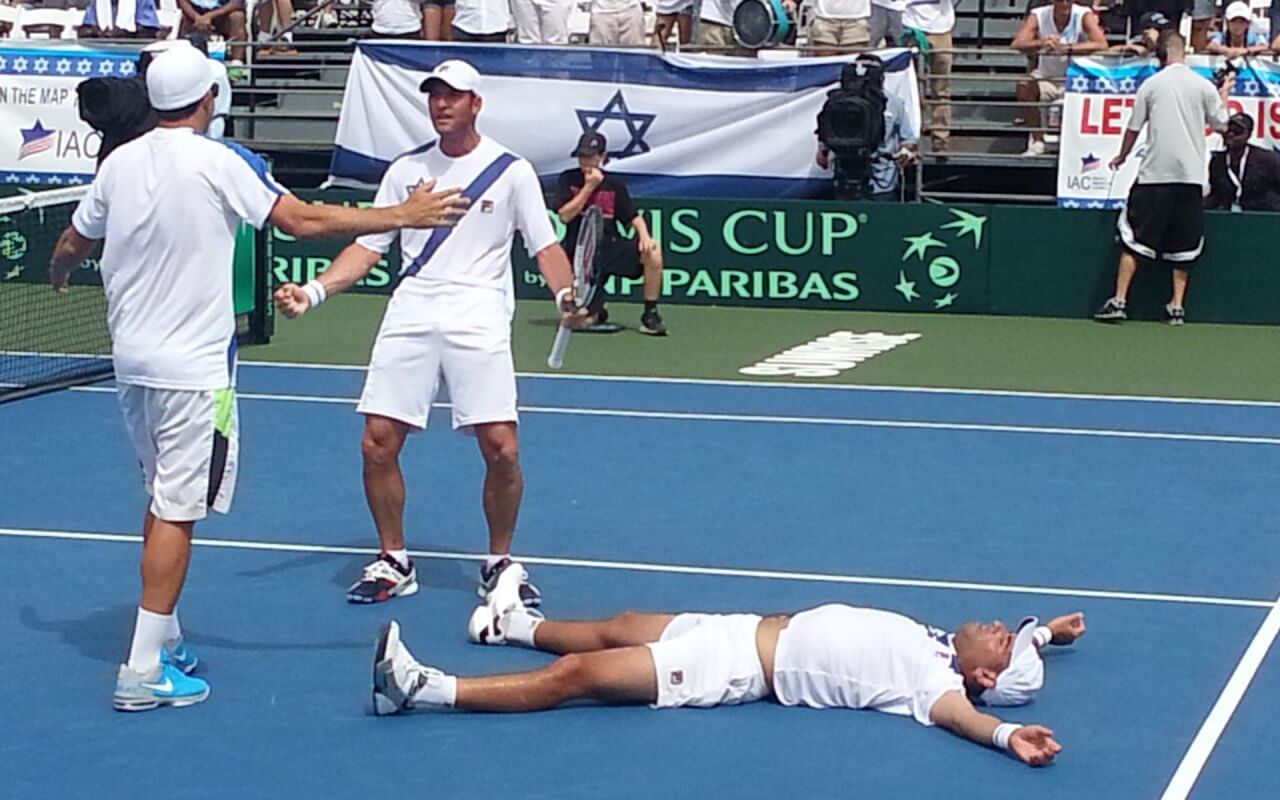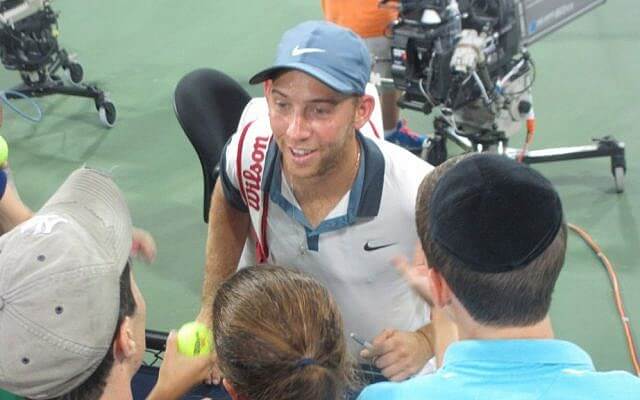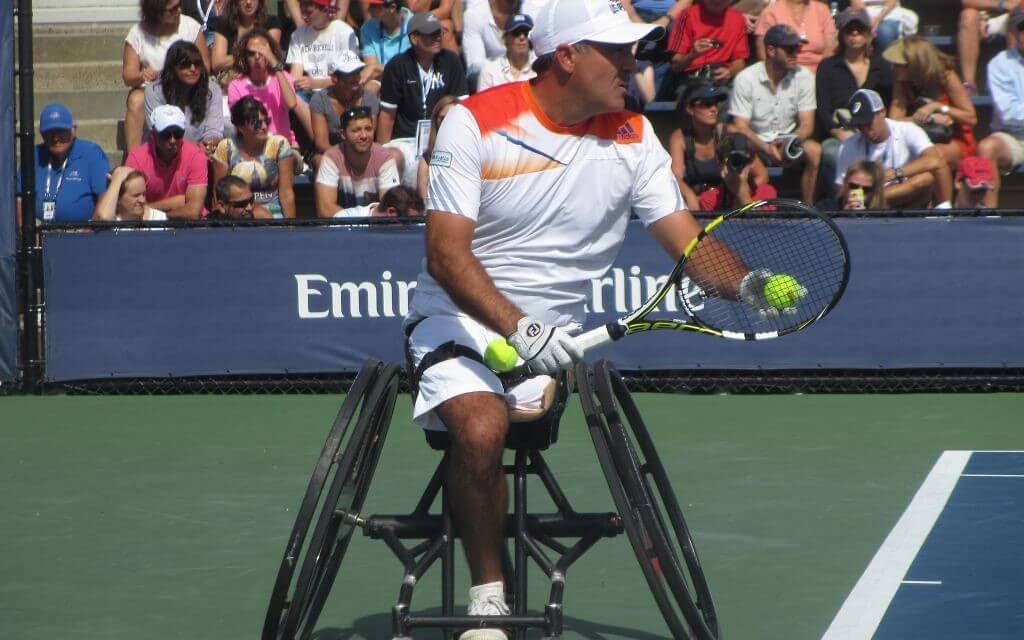Original Article Published On The Jewish Telegraphic Agency
SUNRISE, Fla. (JTA) – It wasn’t Tel Aviv, but thousands of people chanting his name at a Davis Cup match following a grueling victory was a pretty good way for Israel’s Andy Ram to leave the game of tennis to which he had devoted more than half his life.
Ram, 34, and his longtime doubles partner, Yoni Erlich, had just outlasted the Argentine duo of Federico Delbonis and Horacio Zeballos in a five-set match on Saturday that lasted nearly three-and-a-half hours.
With Ram sprawled out on center court — on his back, in tears — the crowd waved Israeli flags and “Todah [Thank you] Andy Ram” signs in Hebrew and chanted “Andyoni” and “Tishaer [Stay],” suggesting that he put off the retirement he had announced recently.
His teammates, wearing “Todah Andy” shirts, surrounded Ram, hoisted him in the air and carried him off the court. They proceeded to dump an ice-filled bucket on his head.
He would stay on the court for 20 minutes signing autographs and posing for pictures.
At a news conference afterward, Ram talked about his actions following the match, with Erlich and coach Eyal Ran at his side.
“I ran out of energy,” he said. “Then, as I was looking up at the sky and the birds, I got very emotional. And I cried like a baby.
“I thought of my father who couldn’t be here. I thought of my mom who was here. I left home at 14 to play tennis. Most of our relationship was on the phone. It meant the world to me that she was here.”
The doubles victory had put underdog Israel ahead 2-1 in the team match, but Argentina took both singles matches the following day to advance in the international tournament.
Despite the thunderous reception — as well as the Hebrew music heard frequently during the changeovers — Ram and his Israeli teammates lamented that the match was not played in central Israel, as scheduled, rather than South Florida.
In July, the Argentine Tennis Association requested a change in venue from the Nokia Arena in Tel Aviv due to security concerns surrounding the conflict in Gaza. The International Tennis Federation informed Israel in August that the match had to be moved. Israel appealed but lost; it would have to serve as host in a different location.
The Sunrise Tennis Club was selected from among several options. Much of the crowd there backed the Israelis, with a section of Argentines clad in light blue and white shirts rooting on their guys.
“We are playing here in the U.S.; it is a good feeling and yet it is not the best feeling,” Ram told JTA on Friday. “It was supposed to be in Israel. I wanted to play in front of my home crowd.”
His teammate, Dudi Sela, was a little more direct.
“The ITF made a mistake,” Sela told JTA. “We were looking forward to playing in front of 11,000 people cheering for Israel.”
Asi Touchmair, the chair of the Israel Tennis Association, noted in a statement that Israel has hosted the Davis Cup during times of war and military operations without having to move the matches.
Despite the distance and the logistics difficulties involved, Touchmair said, “we decided to play the Davis Cup in South Florida due to the warm and welcoming relationship that Israel receives from the United States, and where an atmosphere of a ‘home away from home’ will be experienced by our Israel Davis Cup team.”
Among those who made the trek to Sunrise was Andrea Eidman, an Argentine sports journalist who came from Buenos Aires.
“People asked me, who do you cheer for? And honestly, I didn’t care!” she said.
Eidman added, “For me, being present at that tennis court … with the Hebrew music going on and on, with the Israeli flags, the ‘Hatikvah,’ the shofar — it was a party from beginning to end!”
Ram, sitting in the stands on Friday with Erlich, 37, and cheering on his teammates during singles’ matches, told JTA he had no problem looking toward the future.
“I try to put it behind me, like in the past,” he said. “I am the kind of guy who is always thinking, ‘What’s next?’
“It was fun. It was a good time. Next is to focus on my kids [aged 5 and 7]. To see them growing, to be great athletes. To find myself, my way.”
Ram and Erlich – natives of Uruguay and Argentina, respectively — reached as high as No. 5 in the world doubles rankings. They advanced to 36 finals and won 20 of them, including the 2008 Australian Open. Ram also won the Wimbledon mixed doubles in 2006 and the French Open mixed doubles in 2007.
Ram is particularly proud of his Davis Cup record of 19-5 following the one final victory – achieved despite pulling muscle in his left leg late in the fifth set.
“I sent Jonathan on a suicide mission,” Ram joked. “He said, ‘Just get the serves in. I will do the rest.’ ”
Erlich’s particularly strong volleys powered the duo in the final set in 91-degree heat.
Ram spoke of his partnership with Ehrlich.
“When we go on court together, magic happens. We communicate. We know what the other one will do,” Ram said.
Erlich offered, “We had motivation, energy and a lot of belief.”
Eidman summed up what much of the crowd was likely feeling on seeing Ram’s finale.
“I felt like crying when Andy Ram said goodbye to tennis,” she said, noting that the Argentina team’s Jewish captain, Martin Jaite, was playing in his final match, too.
Eidman also said, “I would have loved to travel to eretz Israel instead of America. … It hurt my heart not to go to Israel because of the war.”
But, Ram said, “11,000 people screaming Andyoni is amazing!”




